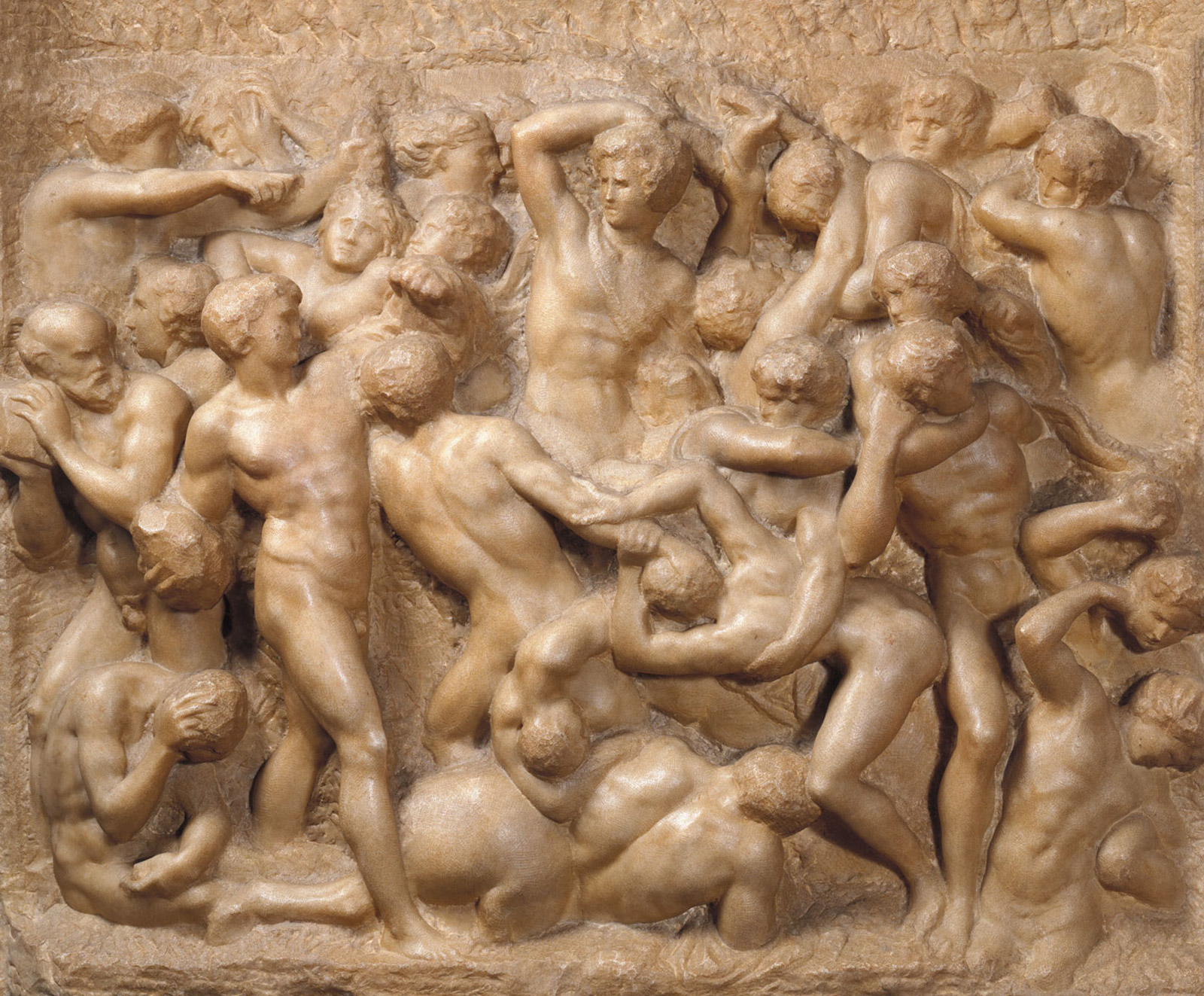Michelangelo Was Making This
The battle of the Lapiths and Centaurs is not over
Alexander Nagel

When Michelangelo made this work, he was a teenage protégé of the Medici family, taking meals with the Medici children and studying and working in the family’s sculpture garden in Florence. He didn’t have to think about making this work for a specific location or purpose, apart from the goal of impressing the artists and scholars who frequented the household.
Michelangelo’s early biographers tell us that the poet and historian Angelo Poliziano, tutor to the Medici children, gave Michelangelo the idea for the subject, the battle of the Lapiths and the Centaurs. In the story, told by Ovid, Plutarch, and other ancient writers known to Poliziano, the Lapiths, a people from northern Greece, hold a wedding party to which they invite their neighbors—the half-human, half-horse Centaurs. The brutish Centaurs drink too much and their leader decides he’s going to make off with the bride, unleashing a ferocious and lengthy battle eventually won by the Lapiths. It was a well-known subject for art, having been carved in a series of marble reliefs for the Parthenon in Athens by the legendary sculptor Phidias. Like Phidias’s reliefs, Michelangelo’s has been interpreted as an allegory of the triumph of civilization over barbarism, or rather as a psychomachia, a dramatization of an internal struggle to conquer the lower impulses within ourselves.
The civilization-over-barbarism and mind-over-body interpretations are complicated by the fact that the relief shows the Lapiths using brute physical force to conquer their bestial foes. A corollary complication is that the relief makes it hard to keep the two sides apart, let alone distinguish high from low. No one Centaur is easy to make out. We can guess that the figure at top is a Centaur whose bottom half is only barely visible, and at the bottom the upper half of a fallen figure adjoins the hind part of a horse, a juxtaposition we can read as the two parts of a Centaur, and another figure to the right might just be sprouting non-human legs from his abdomen. Instead of showing Lapiths clearly pitted against Centaurs, as other artists close to Michelangelo did, the relief is a mêlée of bodies, or rather parts of bodies, with zero space or setting. In the center are two figures, one dragging a struggling second figure by his hair. Yet, they’re both human. What is going on? Who is fighting whom?
There’s one figure a little left of center who is seen almost whole, but the rest of the relief shows limbs in a jumble, some in low relief and some closer to full figure, each entangled with the next. The top of the relief is a rough face of marble marked by repeated blows of the chisel and nothing else. Below, the work of roughing out the figures is largely complete, but the unfinished figures still show the shaping marks of the claw chisel. In the lower left corner, the boulder about to be hurled by the standing figure hovers above the head of a fallen figure with his hand on his head. The head and rock are hunks of marble of equivalent size and roughed out to the same degree. The same goes for the sequence of rock-head-head in the lower right corner. At the center of the composition, a lump of marble near the abdomen of the central figure could be a rock or a head—there’s no telling.